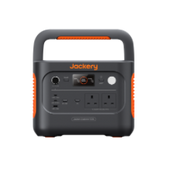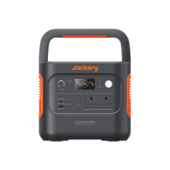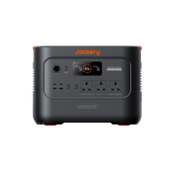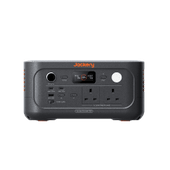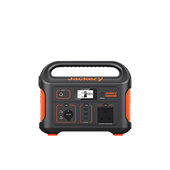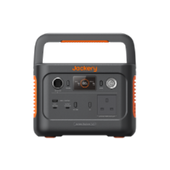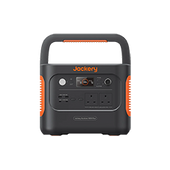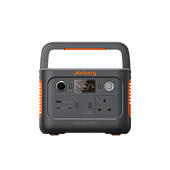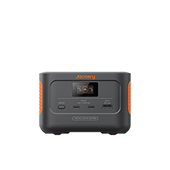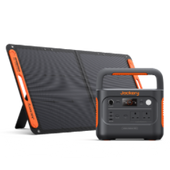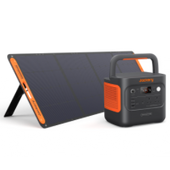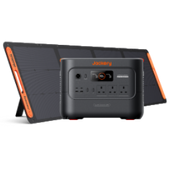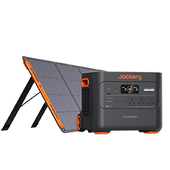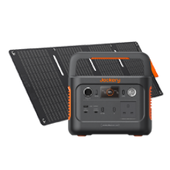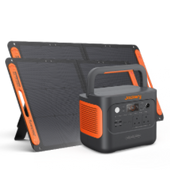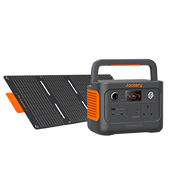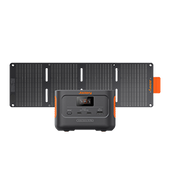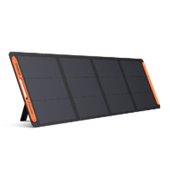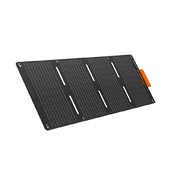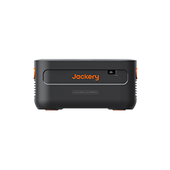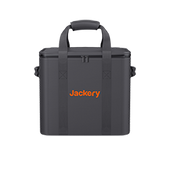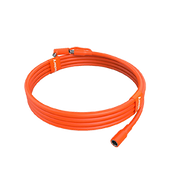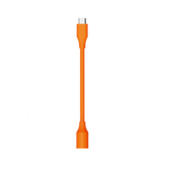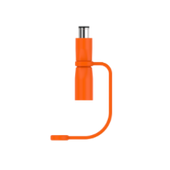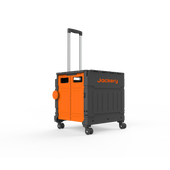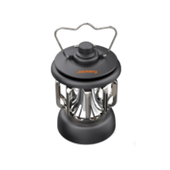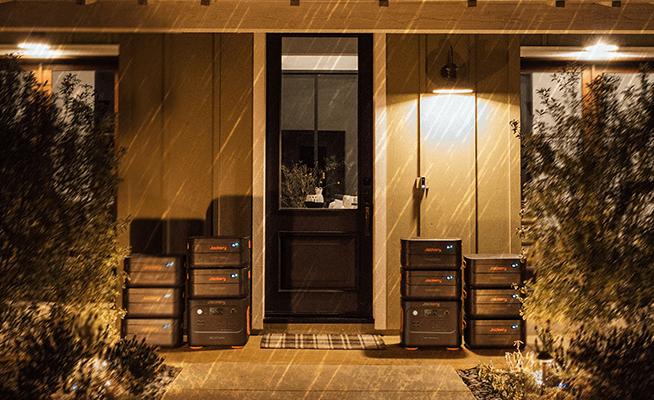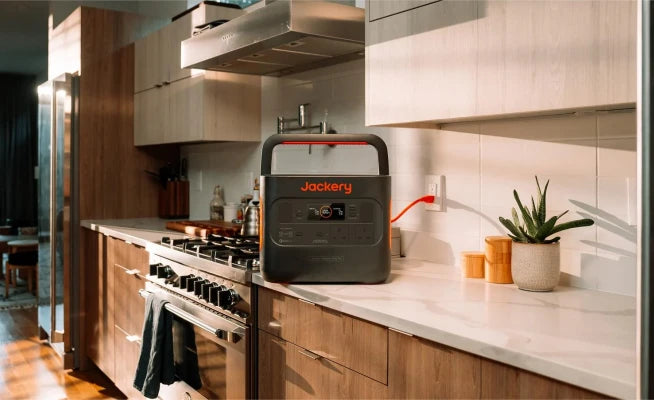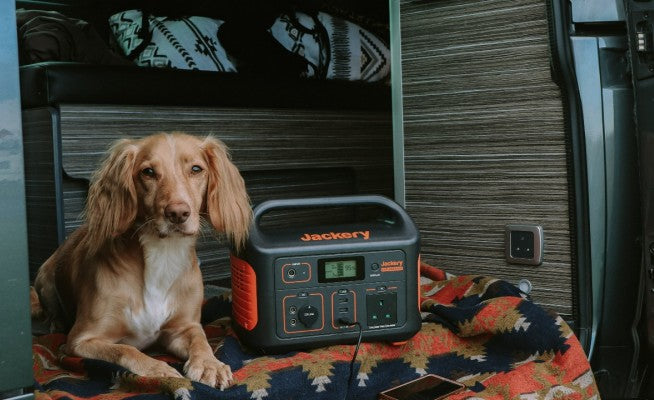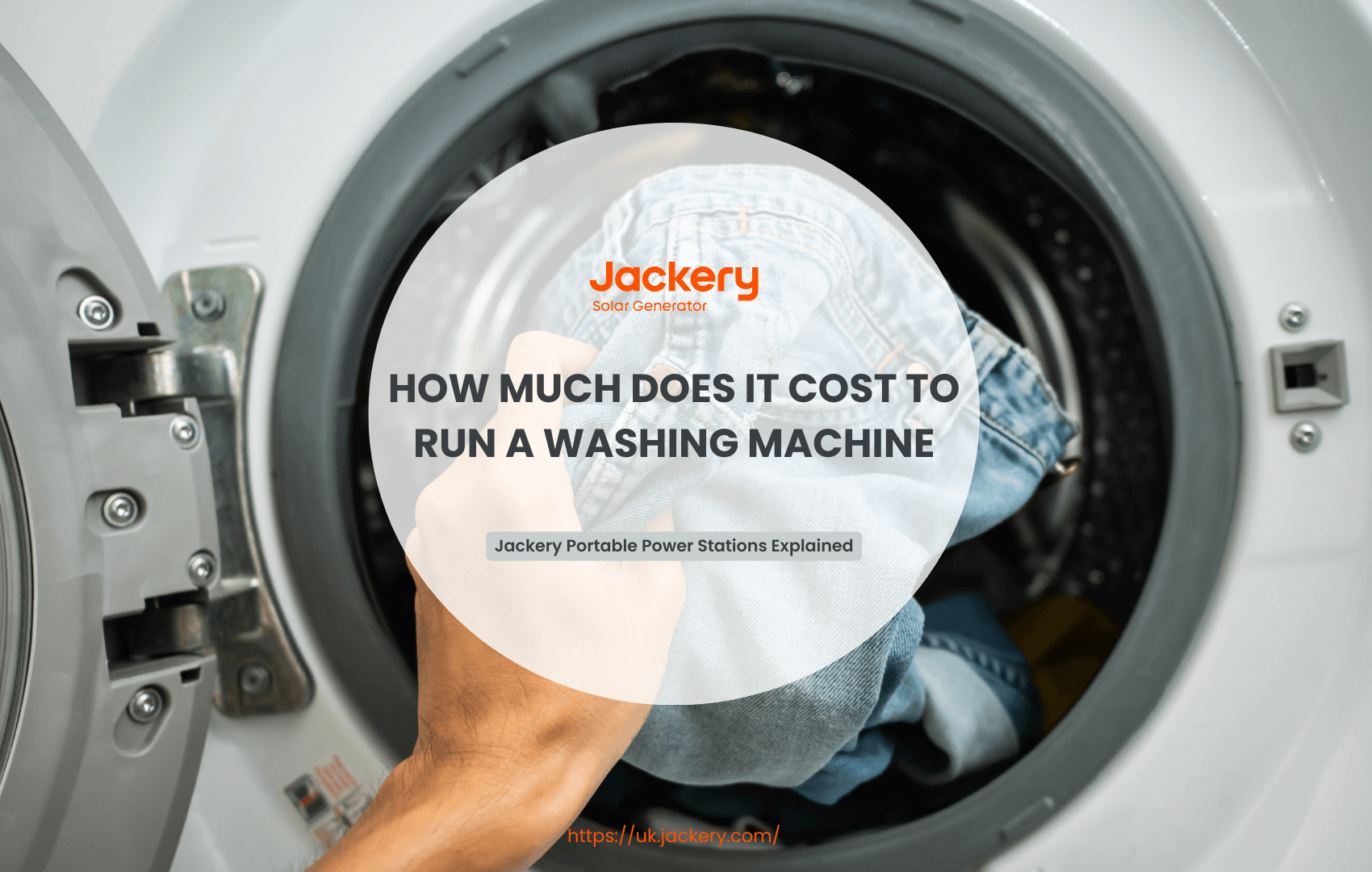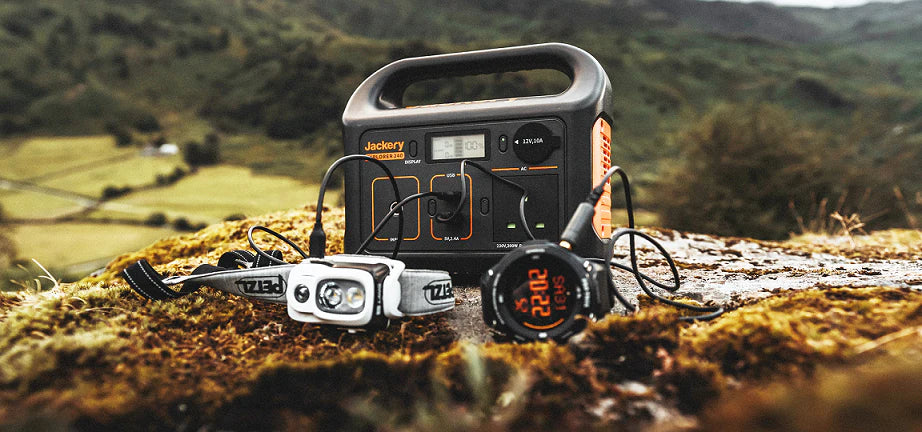Different appliances use different energy levels, and washing machines account for a significant portion of household electricity use. But before you do your laundry again, have you ever thought about how much it costs to run a washing machine?
Keep reading below to find out exactly how much you can expect to spend running a washing machine and how you can reduce its running costs. Moreover, we highly recommend Jackery Portable Power Station for powering washing machines and other household appliances, especially during peak hours or unexpected power outages.
|
Key Takeaways: |
|
- Washing machines consume a medium amount of energy compared to other common household appliances. - Washing machines with higher energy efficiency ratings (e.g., A rating) consume less energy when operating and have lower running costs. - Your washing machine's electricity depends directly on its power, ranging from 300W to 2100W. - If you live alone and use your washing machine once a week, the average annual cost is about £50. A family may need to use the washing machine more than 2 times a week, and the yearly cost of using the device will likely exceed £100. - You can calculate the rough running cost of a washing machine using this simple formula: Washing machine wattage (W) x duration of use (hour) x number of uses x electricity price (p/kWh) = rough running cost of the washing machine. - We highly recommend Jackery Explorer 2000 Plus and 1000 Plus for power tumble dryers. These devices use solar energy to save money on your electric bill. |
Does the Washing Machine Consume a Lot of Energy?
In modern families, household appliances are essential to household energy consumption. Washing machines have become indispensable household appliances. Their energy efficiency rating is 1 kW to 2.5 kW, but they do not consume the maximum electricity during washing.
Does a washing machine use more energy than a refrigerator?
Refrigerators are household appliances that run all year round and usually consume between 200 kWh and 500 kWh of electricity per year. Although not very powerful, they are plugged in almost 24 hours daily, consuming the power needed to maintain the right temperature. In contrast, a washing machine consumes power only when washing and spinning. Therefore, a refrigerator's energy consumption is comparable to that of a washing machine or even higher in some cases.
Does a washing machine use more energy than an electric oven?
An electric oven is one of the most power-consuming appliances in your home. Its energy efficiency rating is usually between 2 kW and 2.4 kW. Although it is used more frequently, it is used for a shorter period (usually one hour per day).
So, an electric oven's annual power consumption can reach more than 200 kWh, similar to a washing machine's energy consumption level.
Does a washing machine use more energy than small household appliances?
Generally, TVs, desktop computers, and light bulbs consume relatively little energy. The energy efficiency of modern TVs and computers is constantly improving, mainly LED TVs and energy-saving computers, which usually consume 50 to 100 kWh of electricity per year.
Low-energy light bulbs consume only 18 watts of electricity per hour, and their annual power consumption is less than 10 kWh. The power consumption of TVs, desktop computers and light bulbs is much lower than that of washing machines.
The following is the power consumption information of everyday electrical appliances (for reference only)
|
Appliance |
Energy Rating (kW) |
Daily Time Usage (hrs) |
Average Daily Energy Consumption (kW) |
|
Lightbulbs |
0.01 kW |
5 hrs |
0.05 kWh |
|
Desktop computer |
0.14 kW |
8 hrs |
1.12 kWh |
|
TV |
0.2 kW |
3 hrs |
0.6 kWh |
|
Fridge freezer |
0.4 kW |
24 hrs |
0.75 kWh |
|
Dishwasher |
1.2kW |
2 hrs |
2.4 kWh |
|
Washing machine |
1.5 kW |
0.75 hrs |
1.2 kWh |
|
Oven |
2.2 kW |
1 hrs |
2.2 kWh |
|
Tumble dryer |
2.5 kW |
1 hrs |
1.5 kWh |
|
Kettle |
2.7 kW |
0.25 hrs |
0.7 kWh |
|
Electric shower |
10 kW |
0.5 hrs |
5 kWh |
(Data Source: powerni)
Based on the above analysis, washing machines consume a medium amount of energy compared to other common household appliances. Although they are not as energy-consuming as appliances such as dryers and electric showers, they consume more energy than low-energy devices such as TVs, desktop computers, and light bulbs.

Why Is the Energy Efficiency Rating So Important for Washing Machines?
Energy efficiency ratings are essential for washing machines in the UK, and there are many reasons for this. Most importantly, a washing machine's energy efficiency rating directly relates to its energy consumption.
Energy efficiency ratings consider several factors, including temperature and load level, and are rated based on the amount of energy used per cycle. The UK energy rating system uses EPC ratings, which have moved from the old rating (A+++ to D) to the new rating (A to G).
The higher the rating (A is rated as the most energy-efficient appliance, while G is the least efficient.), the more efficient the machine is generally. For example, the higher the energy efficiency rating of a washing machine, the less electricity it has during the washing cycle.
Washing Machines with Different Energy Efficiency Ratings
Energy efficiency ratings are determined using 100 wash cycles (Eco 40-60 programs), considering various load sizes (but it does not include under- or over-use of the appliance.). Here is a brief introduction to washing machines with different energy efficiency ratings:
A-Rated Washing Machines
A-rated washing machines are available in the UK and are even more energy efficient than older models with A+++ ratings.
B-Rated Washing Machines
While B-rated washing machines do not reach the energy efficiency rating of A-rated machines, they are equivalent to the old A+++ rated.
C-Rated Washing Machines
C-rated washing machines are not the most efficient models currently available, but they represent models with medium efficiency.
D-Rated Washing Machines
While D-rated washing machines are not the least efficient, they indicate room for improvement in energy use. In other words, moving from a D-rated washing machine to an A-rated washing machine can significantly reduce energy consumption.
Here are examples of electricity consumption for 8 kg washing machines of different energy efficiency classes (A to D):
|
Energy Efficiency Rating |
Electricity Consumption |
|
A-rated washing machine |
0.46kWh |
|
B-rated washing machine |
0.55kWh |
|
C-rated washing machine |
0.62kWh |
|
D-rated washing machine |
0.73kWh |
(Data Source: goodto)
How Much Does It Cost to Run a Washing Machine?
During the recent cost-of-living crisis, most Brits have taken concrete actions to reduce their energy bills, such as not turning on the heating at least once a week. So, when it comes to doing laundry, have you ever wondered how much it costs? Here's a look at the cost of running a washing machine.

Key Figures about the Running Costs of a Washing Machine
If you want to calculate the cost of running a washing machine, you usually need to find out a few figures:
Current Electricity Prices
First, you need to know the price per kilowatt-hour of electricity your energy supplier offers you. According to Ofgem's latest energy price cap announcement, the current electricity price averages 24.86p per kilowatt-hour.
The Wattage of Your Washing Machine
The wattage is generally found on the washing machine or its manual. Your washing machine's electricity depends directly on its power, ranging from 300W to 2100W. Once you know the wattage of your washing machine, you can estimate its electricity use per hour. You can divide the wattage by 1000 to get the electricity used per hour (kWh). For example, a 1000W washing machine uses 1kWh for one hour of operation.
The Time You Use Your Washing Machine
Today, most washing machines' average running time (wash + spin) is about an hour (a typical one-hour wash cycle). You must calculate how often and how long you use your washing machine. On average, a British household uses its washing machine three times a week.
How Do You Calculate the Running Cost of a Washing Machine?
You can calculate the rough running cost of a washing machine using this simple formula.
Washing machine wattage (W) x duration of use (hour) x number of uses x electricity price (p/kWh) = rough running cost of washing machine
Example 1: Assuming a 300W washing machine runs for one hour each time and runs three times a week, what is its weekly running cost?
300W x 1hour x 3 x 24.86p/kWh=22.374p
Example 2: Assuming a 1400W washing machine runs for one hour each time and runs ten times a month, what is its monthly running cost?
1400W x 1hour x 10 x 24.86p/kWh=348.04p≈£3.48
Example 3: Assuming a 2100W washing machine runs for one hour each time and runs twice a week, what is its weekly running cost?
2100W x 1hour x 2 x 24.86p/kWh=104.412p≈£1.04
The above examples are ideal situations, and the actual running cost of the washing machine will vary due to various factors.
More Factors Affecting Washing Machine Running Costs
In addition to electricity usage and local electricity prices, factors such as the energy efficiency rating of the washing machine, the choice and amount of detergent used, and the frequency and load of washing will affect the running cost of the washing machine. Here are a few factors that affect the operating cost of a washing machine:
Energy Efficiency Rating
Washing machines on the UK market are usually marked with energy efficiency ratings from A to G, with A (green) representing the highest efficiency and G (red) representing the lowest efficiency.
Frequency of Use
The frequency of use of a washing machine directly affects the total electricity consumption. Frequent small amounts of laundry will increase the number of times the washing machine is used, thereby increasing the operating cost.
The Capacity of the Washing Machine
Washing machines of different capacities have different power consumption. Although large-capacity washing machines can wash more clothes, they usually also consume more electricity. For example, a 3000W washing machine usually consumes more electricity than a 1000W washing machine.
Washing Program
Modern washing machines usually have various programs, such as quick, energy-saving, and strong wash. Different washing programs also consume different amounts of electricity.
Detergents
The choice and amount of detergent used will also affect the operating costs of your washing machine. Too much detergent is wasteful and may increase the number and time of rinse cycles.
How to Use a Washing Machine Cheapest?
Here are some ways to help you reduce costs when using a washing machine:

Tip 1: Centralised Washing
It is essential to fully use every washing cycle of your washing machine. A certain amount of electricity is consumed each time the washing machine starts, so centralised washing is the most economical option. If you fill the washing machine for each cycle, you can reduce the number of washing cycles. Of course, too much clothing will not be thoroughly cleaned, increasing the number of rinses and even damaging the drum.
Tip 2: Reduce the Amount of Detergent
When using a washing machine, the right amount of detergent can achieve the best cleaning effect, clean clothes more effectively, and reduce the number of rinses. Therefore, please choose efficient and environmentally friendly detergents (such as bio-enzyme detergents) and use them according to the amount of laundry and the degree of dirtiness of the clothes.
Tip 3: Keep Your Washing Machine Clean
When a washing machine is full of dirt or its lint filter is clogged, it becomes harder to run. Dirty washing machines not only shorten the life of the appliance but also affect its efficiency. Therefore, clean the filter and the outer casing regularly to prevent mould growth and blockage that affect the washing effect.
Tip 4: Replace Old Washing Machine in Time
The efficiency of washing machines will change as they age. If your washing machine is ancient, it will use more electricity each time it runs, increasing its cost. Therefore, if your washing machine is over 10 years old, consider replacing it.
Tip 5: Use Renewable Energy
Powering your washing machine with a solar system is feasible and has many environmental and economic advantages. Solar energy can no longer be used to rely on external power sources, saving energy and relieving the pressure of peak electricity consumption.
Investing in a generator to run appliances could be a wise choice, especially the solar generator, which turns sunlight into electricity. The portable power station can store the excess power for later use. Once the solar generator is fully recharged, you can run the washing machine and other appliances for several hours to a few days.
If you worry about the bad weather conditions in the UK, you can also recharge the power station at home with wall sockets, especially in off-peak times, which can save electric bills to some degree.
Taking Jackery Portable Power Station and Jackery Solar Generator as an example, if you choose to use the solar generator to power your home appliances, you can save about 50.76 pence per day. If you use it for 10 days, you can save 5 pounds.

Jackery Portable Power Stations Explained
After discussing the running costs of washing machines, you can find that the higher the capacity, the more power it will consume. Some even cost over 3 pounds a week. So, we suggest you try a generator or portable power station to power your washing machine or other appliances. This is especially helpful in emergencies or places where power goes out often.
We recommend Jackery Portable Power Stations to charge your heating appliances and save on your electric bills. Jackery offers portable power solutions ranging from 99W to 12 kWh, capable of powering up to 99% of appliances, including washing machines, refrigerators, microwaves, etc.
Also, the Jackery Portable Power Stations are compact and easy to carry so that you can put them everywhere in your home. Compared to gas or other traditional generators, they are safer to use, and you can even use them while sleeping.
|
Washing Machines |
Working Hours |
|
|
Jackery Explorer 2000 Plus |
Jackery Explorer 1000 Plus |
|
|
300W Washing Machine |
5.4-32H |
3.4-13.3H |
|
500W Washing Machine |
3.3-19.2H |
2-8H |
|
800W Washing Machine |
2-12H |
1.3-5H |
|
1000W Washing Machine |
1.6-9.6H |
1-4H |
|
1500W Washing Machine |
1.1-6.4H |
1.7-2.7H |
|
2000W Washing Machine |
0.8-4.8H |
0.5-2H |
(*The working hours are only for reference; the actual working hours depend on your usage.)
Jackery Explorer 2000 Plus
Jackery Explorer 2000 Plus is more powerful and versatile than 1000 Plus. It is a solid portable power solution that delivers outstanding performance for washing machines. With its impressive capacity and powerful output, this device can support washing machine operation for weeks.
The Jackery Explorer 2000 Plus enables the addition of extra battery packs, increasing the capacity from 2 kWh to an impressive 12 kWh, thereby significantly satisfying your power needs. This solar product has a remarkable output of 3000W, which can charge almost all essential appliances indoors or outdoors. If you only use one Explorer 2000 Plus battery pack, it can charge a 1000W washing machine for 2 hours.
The Explorer 2000 Plus stands out as a groundbreaking add-on battery pack that offers the convenience of recharging through solar panels, wall outlets or carports. This feature increases versatility, boosts charging efficiency, and shortens charging time.
ChargeShield is Jackery's advanced fast charge technology, featuring 62 protective mechanisms, 12 protective algorithms, and four types of physical safety protection. This technology uses a unique stepped variable-speed charging algorithm to enhance safety and extend battery pack lifespan by 50%.

Review from Our User:
I currently have three Jackery Solar Generators. Jackery Solar Generators are a reliable, well-made, and affordable option today. In addition, Jackery has the most outstanding service I've ever experienced. Look at my recent purchases: the E1000v2, E2000v2, and E2000 Plus. I have three 200w Solar Saga Solar Panels that will charge my units in case of an extended power outage.
Jackery Explorer 1000 Plus
Compared to the Explorer 2000 Plus, the Jackery Explorer 1000 Plus is more suitable for small washing machines and has an expandable capacity from 1264Wh to 5 kWh. It equips a durable LiFePO4 battery and a 2000W full-power pure sine wave inverter to supply sufficient energy for practically all essential devices. Notably, its capacity may be augmented to 5kWh by including up to three more battery packs.
The MPPT technology ensures 99% solar charging efficiency. A wall charge from 0% to 100% of the battery requires 100 minutes, whereas solar charging with four SolarSaga 200W solar panels necessitates 2 hours. With car charging capabilities, concerns over power disruptions will be alleviated.
In about 60 seconds, one may seamlessly connect solar panels to the power station, a procedure significantly more straightforward and user-friendly than traditional generators. Furthermore, it features a pass-through charging capability, allowing for device use while concurrently recharging via solar energy.

Review from Our User:
I purchased this product and an extra battery pack a few weeks back and am pleased. The quality of the materials and finish is outstanding. I used it in my motorhome while in the lakes, powering my air fryer and other small appliances, and it handled everything perfectly. It even powered the entire van to recharge the leisure battery for an hour.
What Should I Look Out for When Buying a Washing Machine?
In the UK, when buying a washing machine, consumers should consider many other aspects, including energy consumption. Here are a few key points to consider.
Capacity
When choosing a washing machine, it is essential to consider the capacity that suits the family's needs. Generally speaking, a washing machine of about 8 kg is sufficient for a family of 3 to 5 people, and a washing machine of 10 kg is recommended for a family of more than 5 people.
Performance
The performance of a washing machine is directly related to its use effect and life. Therefore, you need to pay attention to indicators such as the washing ratio, dehydration effect, and noise level of the washing machine. For example, a drum washing machine with a washing ratio of more than 1.0 has a better washing effect than a pulsator washing machine with a washing ratio usually between 0.7 and 0.9.
Drying Function
The changeable weather in the UK makes natural drying less reliable, so it is also essential for the washing machine to have a drying function. A washing machine with a drying function can ensure that clothes can be washed and dried immediately, regardless of the weather, avoiding mould growth caused by moisture. In addition, the drying function can also protect clothing fibres and reduce fading and fabric ageing.
Functional Diversity
Nowadays, when people buy washing machines, they also pay attention to whether there are sterilization, mite removal, washing programs for different clothing materials, etc.
Budget and Cost-Effectiveness
Consumers should determine their budget according to their economic conditions and choose the most cost-effective products within the budget. In addition, please avoid unthinkingly pursuing high-end functions beyond your financial affordability. At the same time, you can pay attention to the merchant's promotional activities and buy your favourite washing machine at a more favourable price.
FAQs
The following are the frequently asked questions about the running costs of washing machines in the UK:
1. How much does using a washing machine cost in the UK?
The electricity cost of a washing machine in the UK can be estimated based on its power and duration of use.
Assuming that a common washing machine has a power of 2kW, each washing cycle takes about 1 hour. Therefore, the electricity cost of using the washing machine is approximately:
2 kWh × 24.86p/kWh = 49.72p ≈ 0.5 pounds
However, the actual cost may vary depending on the washing machine model and factors such as fluctuations in electricity prices.
2. How much does it cost to run a washing machine per year?
The annual running cost of a washing machine depends entirely on how often you use it. For example, if you live alone, you may use your washing machine less frequently than a family.
If you live alone and use your washing machine once a week, the average annual cost is about £50. A family may need to use the washing machine more than 2 times a week, and the yearly cost of using the device will likely exceed £100.
3. How many ways are there to power a washing machine?
In addition to traditional mains electricity, washing machines can also obtain electricity in the following ways:
Solar power generation (solar panel system)
Wind power generation (small wind turbine)
Portable generator
Final Thoughts
In today's economic environment, saving money is everyone's top concern. Compared with other home appliances, washing machines don't use the most energy, but they're not insignificant either. Variables affecting the cost of running a washing machine include the wash cycle length, the wash temperature, and the amount of electricity the machine uses. It is recommended that an energy-efficient washing machine be chosen, wash modes and temperature settings should be used appropriately, and wash at full load as much as possible to reduce energy consumption per unit of clothing.

